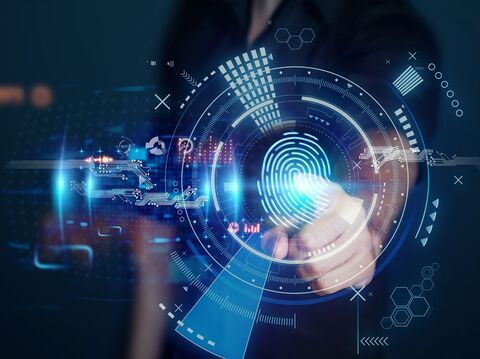Effect of Automation in India - All You Need to Know!

Gone are the days when humans formulated plans, performed multiple tasks, and carried out strenuous activities. With the start of the industrial revolution in Europe, machines slowly began replacing work done using manual labor to produce goods and services.
We began this automation and mechanization journey from the discovery of the steam engine– courtesy of a plethora of scientific advancements since frequent era-defining technological breakthroughs now characterize the digital world.
Automation is rapidly changing how people and businesses function. As automation becomes the norm, more and more companies are questioning how will automation affect jobs and wages. How will automation expand in the future?
What is meant by automation?
Automation refers to implementing technologies in making and distributing goods and services with minimum human intervention. It involves using technologies, processes, and techniques to perform menial and repetitive tasks with less human workforce and greater efficiency and speed.
Automation has crept into many areas in the present world, such as the manufacturing industry, information & technology, healthcare, etc. At present, most businesses are looking at ways to automate their menial tasks. If you're ready to take the next step in automation, we at Growth Jockey can help you access help from specialists and industry experts.
How is automation different from artificial intelligence?
We often use automation and artificial intelligence (AI) interchangeably, when they denote different things in reality.
-
Artificial intelligence includes multiple technologies that mimic human intelligence to perform complex functions.
-
Automation refers to using machines and technology to carry out repetitive and specific tasks in daily life without depending on human actions and interaction.
With vast development in artificial intelligence, machines can perform tasks more effectively, quickly, and reliably and have replaced human labour in several spheres. This way, AI is considered a boon for many and a bane for others. Growth Jockey has a pool of experts that can help you integrate both these distinct technologies into your business.
However, before you decide to implement one or more, consider their advantages and disadvantages.
What are the advantages of automation?

1. Increased productivity:
With automated machinery performing and completing tasks more efficiently and reliably, you witness a rise in productivity and improved operations. You don't experience the errors committed by manual labour in an automated process, despite the tedious and repetitive nature of the job.
2. Less time-consuming:
It significantly reduces the time to finish a particular task. Manual work can take hours or even days. Automation may help you complete this task within minutes.
What are the disadvantages of automation?
How will automation affect your job? How much does it cost? These are some of the frequently-debated aspects that often create apprehensions regarding automation.
1. Displacement and job loss:
Workers are displaced and eventually removed from their jobs as automated machinery can perform those tasks more effectively, increasing unemployment and widening society's wealth gap over time.
2. High capital investment and expenditure:
AI and automation need us to install state-of-the-art software and purchase automated machines, which can be quite expensive. The maintenance and management of such technologies demand a considerable amount of money as an investment, making it riskier.
Has automation affected employment conditions?
Since its advent, one of the major concerns has been how will automation affect jobs and wages. Apart from the higher dependency on and implementation of machines in the working space, automation has brought about drastic changes in employment opportunities, skills, policies, and conditions worldwide.
-
Automated processes and AI have significantly replaced jobs requiring a human workforce, decreasing the value of certain skill sets.
-
On the other hand, automation equipment and automation control necessitate human intervention, to some extent, to apply and monitor newer technologies.
-
Thus, automation companies help us control our machinery and processes without human help in an efficient manner, whereas other jobs revolving around human interaction, judgment, and critical decision-making open up new employment opportunities to us.
How has automation influenced employment demand?
Let us take an example of industrial automation to understand the impact better. Earlier, manufacturing cars and other vehicles involved much human labor. However, with the implementation of automation in the automobile manufacturing sector, the human workforce was displaced and later eradicated for certain tasks.
The future of industrial automation will likely see sophisticated robots shaping and creating car parts, like engines and other components, thus reducing demand for human labor to a larger extent. Similar examples can be seen across various industries.
What are the changes introduced with the advent of automation?
1. Change in skill sets and demand:
As industries primarily revolve around automated technologies, companies and employers look for candidates who can effortlessly adapt to and cooperate with automated technology and work with utmost ease.
2. Reskilling and employee development:
Advanced working conditions require advanced skill sets. As a result, employers start training their employees in specific skills particular to the technology in use. They may also need to be adept in handling specific tools for a smart and seamless transition from hands to clicks.
3. Rebooting and exploring new sectors and opportunities:
Since the introduction of automation technology, it has been essential to re-analyze existing industries and explore or examine new fields that offer higher job opportunities from automated processes.
How has automation reshaped jobs in India?
Although AI and automation techniques have drastically reduced employment chances compared to earlier times, it has also opened doors to diverse opportunities surrounding advanced technology. They include:
-
Creation of automated systems: People who create and design technologies, such as robotics, software and application developers, and data science professionals, are in high demand in recent times.
-
System training: People who train and code the technology to perform a specific task efficiently are also highly required to make the technology easy to use.
-
System maintenance: We need technicians and other professionals who are well-versed in checking the technology and its efficiency, and making repairs, in case of damage or other contingencies.
-
Management executives: Automated machinery and other technologies still demand monitoring personnel, who might examine and manage technology using key performance indicators (KPIs), dashboards, and other systems to ensure smooth operation.
Further, there are a few fields where the role and functions of a human being are unlikely and difficult to be automated and properly performed by a robot. Here are some examples:
-
Jobs that require human interaction, decision-making, and specific skills to solve problems, such as lawyers, doctors, leaders, etc., cannot be replaced by automation and robots due to their subjective nature.
-
Jobs requiring us to comprehend people’s emotions and efficiently analyze their responses, like human resource professionals and customer care executives, are challenging and will likely not be performed by robots.
-
Jobs of psychologists and caregivers that demand empathy and the ability to build and develop relationships with others cannot be displaced but only complemented with automated processes.
-
Jobs entailing the implementation of creativity and unique thought processes to create content, such as musicians, painters, dancers, and other artists, have low chances of being displaced.
Conclusion
Automation has caused a significant shift from human labor to machine labor in several sectors, like IT, medicine, manufacturing, etc. Although it caused a decrease in the demand for human workforce and employment opportunities, the future of automation and AI technology brings other job opportunities.
We can cope with advanced automated technology by reskilling employees, adapting to the skill sets in demand, re-examining, and exploring new sectors.
At Growth Jockey, we keep up with the pace of rapidly updating technology to help brands grow with sustained superior performance. Whether it’s for marketing, sales, product development, or strategy, utilizing and understanding the latest technology is a must if you want to stay ahead of the competition. Explore automation, AI, and other business solutions by contacting us at Growth Jockey
Frequently asked questions
1. What is cognitive automation?
Cognitive automation refers to the use of artificial intelligence to perform automated tasks that require human-like judgment, analysis, critical thinking, and strategic decision-making. It means automation of processes where thinking is required.
2. What is the future and scope of automation?
How automation will expand in the future is a highly discussed aspect since automated technology replaces human labor, and hyper-automation is bound to play a pivotal role in the time ahead. Hyper-automation refers to a multi-technology and focused approach towards automating as many processes as possible using techniques such as AI, machine learning or ML, robotic process automation or RPA, etc.
3. What are the different ways to cope with the transition from manual labor to automation?
-
Relevant policy changes and sector-targeted initiatives can be made to ensure steady demand growth for new automation companies to offer new job opportunities.
-
Retraining individuals, so they can learn new essential skills and smoothly transition from working alone to working with technology is another way to adjust to the shift.
-
Extending necessary financial support and other assistance to replaced employees is necessary to ensure a smooth and easy adjustment to the new working method.
4. What are the possible changes in the post-automation working system?
-
A flexible workforce combining human and automated technology helps provide job security while meeting high market demand and productivity rates.
-
Technologies like AI will provide further assistance and complement jobs that entail human-centric abilities, like critical thinking, empathy, relationship-building, etc.
-
An improved learning culture is another change that will help us conveniently cope with the automated workspace. We can learn new skills and upgrade existing skills to adjust to modern technological processes and improve productivity.








